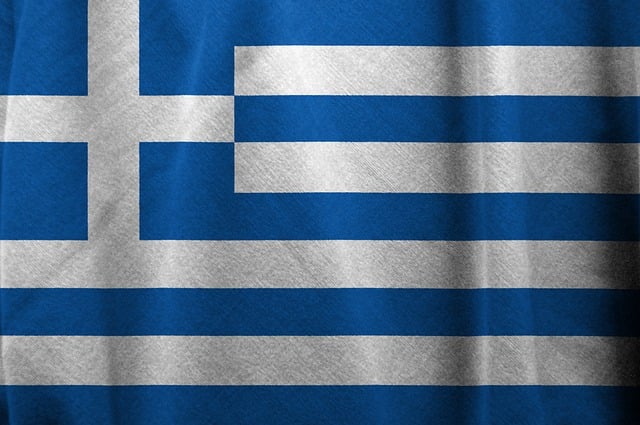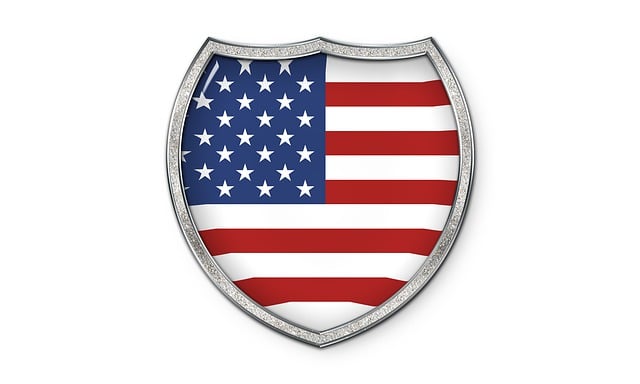The American Ultimate Ultimate Flags skull, an iconic cultural symbol, artfully combines the reverence for America's heritage with a rebellious edge, reflecting the nation's dualities of patriotism and defiance. This emblem captures the essence of American identity, inviting contemplation on freedom, unity, and change. It resonates across various cultures and subcultures, symbolizing the ongoing negotiation of national identity and the redefinition of cultural narratives through a lens of conviction and experience. Originally a marker of punk and heavy metal culture, its mainstream presence in fashion underscores its multifaceted significance as an emblem that blends American pride with a reminder of mortality and the power of symbols to evoke deep introspection on personal and national levels. The American Flag skull stands as a testament to America's complex history, from the Revolutionary War to the Civil Rights Movement, embodying resilience, resistance, and the ever-evolving nature of the American psyche.
The American Flag skull—a potent emblem that intertwines the profound spirit of patriotism with the bold essence of rebellion. This article delves into the multifaceted symbol, exploring its origins, cultural resonance, and evolution within fashion, politics, and beyond. As a cultural phenomenon, the American Flag skull stands as a testament to the complexities of American identity, challenging and embracing national values in equal measure. Join us as we unravel the layers of meaning behind this striking image, and consider its profound implications for individual expression and collective identity.
- Embracing Revolutionary Spirit: The American Flag Skull – A Symbol of Fierce Patriotism and Defiant Rebellion
- The Artistic Genesis: How the Iconic American Flag Skull Became a Cultural Phenomenon
- Cultural Contrast and Harmony: Analyzing the Symbolism Behind the American Flag Skull Motif
- Fashioning Freedom: The Evolution of the American Flag Skull in Apparel and Accessories
- The Political Palette: How the American Flag Skull Reflects America's Complex Identity
- Beyond the Surface: The Psychological Impact of the American Flag Skull on National Identity and Individual Expression
Embracing Revolutionary Spirit: The American Flag Skull – A Symbol of Fierce Patriotism and Defiant Rebellion

The American Flag skull, a powerful and provocative emblem, encapsulates the dual spirit of fierce patriotism and defiant rebellion that has been woven into the tapestry of American history. This iconoclastic symbol blends the revered stripes and stars of the Stars and Stripes with the indomitable imagery of a skull, challenging viewers to contemplate the depth of its meaning. It stands as a testament to the revolutionary ethos that gave birth to a nation, where dissent and loyalty coexist in a complex dance of identity and ideology. The American Flag skull does not shy away from the confrontational fusion of these seemingly disparate elements; instead, it embraces the duality inherent in American culture, representing a spirit that honors tradition while simultaneously challenging the status quo. This symbol speaks to those who hold dear the principles of liberty and justice for all, yet also harbor an inner defiance against oppression and inequality, embodying the courage to stand up for what is right even when it means going against the grain. It’s a visual reminder that the essence of revolution lies not in overthrowing tradition but in redefining it with the boldness of conviction and the wisdom of experience.
The Artistic Genesis: How the Iconic American Flag Skull Became a Cultural Phenomenon

The artistic genesis of the iconic American Flag Skull, a powerful emblem that fuses patriotism with rebellion, is a testament to the complex tapestry of American identity. This compelling piece emerged from the creative vision of artist Alex Davis, founder of DEADWEATHERART Co. It represents a profound statement about freedom and the human experience, challenging viewers to confront the duality inherent in patriotism: love for one’s country and the desire for personal autonomy. The American Flag skull became a cultural phenomenon not only because of its striking imagery but also due to its ability to resonate with diverse audiences across America. It speaks to those who see the flag as a symbol of their heritage, as well as those who identify with countercultural movements, creating a sense of unity and shared narrative that transcends boundaries. The use of an iconic American symbol, the flag, juxtaposed against the image of mortality and defiance represented by the skull, has sparked conversations and contemplation on national identity and individuality. This artistic fusion has cemented its place in the cultural zeitgeist, becoming a symbol that is both provocative and reverent, emblematic of an era where the lines between loyalty, dissent, and self-expression are increasingly blurred.
Cultural Contrast and Harmony: Analyzing the Symbolism Behind the American Flag Skull Motif

The American Flag skull, a striking symbol that encapsulates a complex blend of cultural contrast and harmony, becomes a focal point for analyzing the multifaceted nature of patriotism and rebellion in American identity. This motif intertwines the red, white, and blue with the macabre imagery of a skull, creating a powerful visual statement that defies simple interpretation. On one hand, the flag represents the ideals of freedom, democracy, and national pride; its stars and stripes have long been a rallying point for unity and collective aspirations. Conversely, the presence of a skull within this iconic design serves as a stark reminder of mortality and the impermanence of life, challenging the viewer to confront the realities behind the abstraction of national identity. This juxtaposition invites an exploration of the tension between upholding traditions and embracing change or dissent. The symbolism behind this American Flag skull is a testament to the complexity of cultural narratives, where patriotism and rebellion coexist not as antitheses but as complementary forces that shape a dynamic national consciousness. It is a visual dialogue that prompts introspection on the role of symbols in society and their ability to evolve, reflecting both reverence for heritage and an acknowledgment of the need for progress and reevaluation.
Fashioning Freedom: The Evolution of the American Flag Skull in Apparel and Accessories

The American Flag skull, a potent symbol merging the spirit of liberty with a defiant edge, has carved out a unique niche within the realm of fashion and accessories. This bold motif, characterized by the juxtaposition of stars and stripes with the iconic imagery of a human skull, first emerged as a subversive statement in countercultural apparel. Over time, it has evolved from its origins within punk and heavy metal subcultures to gain mainstream appeal, all while maintaining its core significance as a symbol of both reverence for American heritage and a challenge to the status quo.
Today, the American Flag skull can be found adorning everything from t-shirts and jackets to hats and belts. Its presence in apparel and accessories is a testament to the ever-shifting dynamics of cultural expression and personal identity. Designers and brands have reinterpreted this symbol, often infusing it with new meanings and contexts that resonate with diverse audiences. The flag skull’s journey from fringe to fashion highlights the enduring power of visual symbols in shaping cultural narratives and individual perceptions of freedom, patriotism, and rebellion. It stands as a sartorial representation of the complexities inherent in American identity.
The Political Palette: How the American Flag Skull Reflects America's Complex Identity

The American Flag Skull, a potent symbol that captures the essence of America’s multifaceted identity, is a compelling representation of the nation’s complex political palette. It artfully fuses the traditional red, white, and blue with the gritty imagery of a skull, creating a dialogue between patriotism and rebellion. This fusion speaks to the heart of American history, where ideals of freedom and democracy have often been challenged by dissent and the struggle for rights. The flag’s colors, synonymous with national pride, contrast starkly with the mortality symbol of the skull, highlighting the tension between idealism and the reality of human frailty and the need for societal change. This artwork encapsulates the country’s ongoing negotiation with its own identity—a land of the free, yet not always for the brave in every sense.
Moreover, the American Flag Skull becomes a lens through which one can view the nation’s evolution. It stands as an emblem of resilience and resistance, reflecting moments both heroic and tumultuous in America’s story. From the Revolutionary War to the Civil Rights Movement, this symbol encapsulates the spirit of defiance that has driven progress and challenged the status quo. It serves as a reminder that American identity is not monolithic but rather a dynamic tapestry woven from threads of unity and dissent, tradition and innovation, conformity and nonconformity. In this way, the American Flag Skull is not merely an artistic statement but a poignant reflection on America’s enduring journey towards self-definition and societal evolution.
Beyond the Surface: The Psychological Impact of the American Flag Skull on National Identity and Individual Expression

The American Flag skull, a motif that intertwines the symbolism of patriotism with the notion of mortality and rebellion, invites a profound exploration into the psyche of national identity and individual expression. This audacious iconography challenges viewers to confront the complexities inherent within the concept of Americanism. It is not merely an emblem of love for country but also a stark reminder that every symbol, including the flag, represents living beings with their own stories, struggles, and ultimate human vulnerability. The psychological impact of this fusion is multifaceted; it can evoke a sense of unity and shared history while simultaneously prompting introspection about one’s place within the larger narrative of the nation. It serves as a catalyst for dialogue on how individuals reconcile their personal beliefs with collective identities, often leading to a deeper understanding of the values that the flag purports to represent.
Incorporating the American Flag skull into cultural discourse allows for a richer conversation about identity, both national and individual. It transcends surface-level patriotism by forcing an engagement with the underlying themes of life, death, and the human experience. This imagery becomes a symbol that resonates on multiple levels, from the visceral reaction to its striking visual form to the intellectual considerations it provokes about the role of symbols in society. It challenges the viewer to contemplate their own identity within the context of American history and the broader tapestry of human civilization. The interplay between the solemnity of the skull and the vibrancy of the flag creates a dialogue that is as much about acknowledging our shared humanity as it is about celebrating the diversity of individual expressions within the American mosaic.
